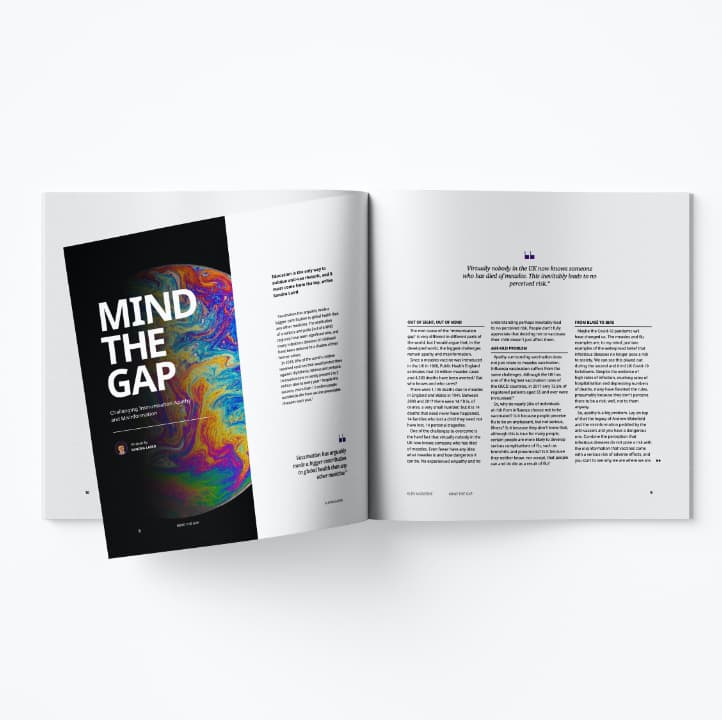
Behavioural Change – Lessons From Down Under

As communicators, the last 12 months have been fascinating to watch purely in terms of behaviour change.
Humans are notoriously habitual creatures, using heuristics to make decisions constantly, mainly sub-consciously. This is now widely understood and there’s enough literature out there to spend a career in the field – everyone’s read Kahneman’s Thinking fast and slow, I’m sure…
But impacting behaviour – more specifically, changing behaviour – is an uphill battle, and yet this is fundamentally our exact job as marketing communications experts: to elicit change in someone’s decision-making behaviour.
When we think of patients, this is manifested in terms of adherence to treatments or finding ways to build a therapy into daily routine. For HCPs, getting them to challenge pre-existing habits in the way they’ve approached treatment of a certain condition might be more pertinent and impactful.
In the current climate, it’s government communications that I take a view on here. As of January 2021, £100m had been spent on marketing communications to the public, and yet I would argue people just got more and more confused as time went on.
Meaningful behaviour change was hard to make happen over and above wearing a mask and staying two metres apart from others. For £100m I would argue that’s an appalling return on investment, but more importantly it’s money that could have been better spent – and not on other elements of managing the pandemic. By this, I mean it could have been better spent in terms of the strategy and delivery of government comms. ‘Staying alert’ was a particularly strange example – I’m still not sure anyone ever successfully explained what that meant or understood it.
The fact is that, unfortunately, behaviour change is unlikely to happen overnight. It requires persistent consistency! But communications, when delivered correctly, can still achieve the desired goals.
Hence I wanted to demonstrate an approach to a behavioural problem, and award-winning work (not mine), which overcomes the entrenched actions of people – establishing a framework we can all think of when looking at behaviour change problems.
Behavioural change in practice
When I lived in Melbourne, Australia, I worked on the Victorian government’s bushfires campaign. Now, in the UK you would think that many people when told to leave their homes due to oncoming bushfires would do just that – but that was not the case. It was a huge hurdle to overcome a sense of ‘defending one’s property’.
While we’re unlikely to encounter bushfires in the wet and mild UK (at least for now), I wanted to share how we approached the problem using a framework we’re all familiar with – road safety, namely drink driving and speeding, both of which are classic behavioural change problems and exist in every country on the planet.
- How do you stop people from drinking and driving?
- How do you get people to follow speed limits in built-up areas?
We followed a strategy of three messaging vehicles (pardon the pun):
- Consequences of action
- Education on why we’re asking you to change
- Fear of being caught
On their own, they may be effective in the short term, but it was only when all three were used in tandem, consistently, that behaviour changed over time. A blend of rational and emotional messaging was also crucial.
Of course, this was supplemented by action in the field by the police force and government support, which after all is vital. Communications on their own aren’t going to do the job, although I would argue strong creative work will have a greater than expected impact if done correctly.
Please note that the videos referenced below contain some graphic scenes.
DRINK DRIVING
| Consequence of action | Education | Fear of being caught |
| Fatality and SHOCK factor | How drinking affects your driving ability | Police are breathalysing motorists constantly |
| Tell an emotional story of the consequences of doing the wrong thing e.g. crashing a car when drunk and killing a loved one. | Talk about the reasons drinking affects driving, focus, attention span, reaction time, etc. Or what does affect your drinking level in order to drive? | Demonstrate the police presence and the punishment for being caught drinking and driving |
| Watch the ad: ‘If you drink, then drive, you’re a bloody idiot’ | Watch the ad: ‘What impacts your Blood Alcohol Concentration (BAC)?’ | Watch the ad: ‘TAC Xmas Drink Drive enforcement campaign 2011’ |
SPEEDING
| Consequence of action | Education | Fear of being caught |
| Fatality and SHOCK factor | The reason speeds are set at 30mph (60kph) | Speed cameras. |
| Tell an emotional story of the consequences of doing the wrong thing e.g. crashing a car when speeding and killing loved one(s). | Demonstrate the difference in stopping distances of a car travelling at 65kph and 60kph and what it means. Or in the UK market, hitting a pedestrian at 30mph (walk away) vs. 35mph (hospital). | Punishment for speed cameras and the fact that police are also doing so on mobile devices. |
| Watch the ad: ‘The Lucky Ones Get Caught 60″ MA’ | Watch the ads: ‘What happens when you wipe off 5?’ ‘Driving 10km/h less will save lives’ | Watch the ad: ‘TAC Xmas enforcement 2011’ |
The support of PR and TV shows help – as well as PR pressure. The age of some of these adverts simply prove the length of time you need to remain consistent.
In Victoria, where my experience comes from, the results speak for themselves. The behaviour change has been extraordinary, and will continue to positively impact results. And just think – we all wear seatbelts now. That’s not by accident.
So what lessons can we learn? When thinking about a behaviour change problem, can you think of a way to approach the problem which positively overcomes the multiple habits and heuristics that are ingrained in all of us?
For patients starting out on a new therapy who need to remember to take medication:
| Education | Habit forming | Working with your HCP |
| How the therapy works and why it will help. | When to take and why. | Sharing adherence data. |
| Give knowledge of the therapy. | Combine with an every-day task to make it easier to become a habit. | Helps maximise your treatment. |
Combined with great behavioural insights, this strategic framework can make a huge difference to a campaign and its execution. At Dice, we call the framework Pharmacohesion – but no matter what you call it, you can be sure of impressive results.





